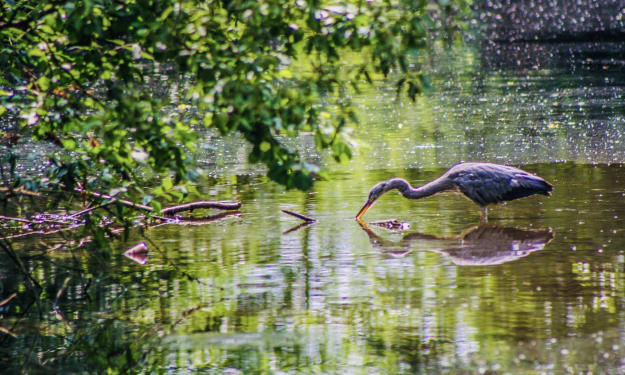10 Jaw-Dropping Photography Tricks That Will Leave You Speechless!
Unleashing Your Creative Side: How to Improve Your Photography Skills and Take Stunning Photos

Are you tired of taking the same old boring photos? Do you want to up your photography game and impress your friends and family with stunning images? Look no further! We've compiled a list of 10 jaw-dropping photography tricks that will leave you speechless.
- Forced perspective: This technique involves playing with the perception of distance in your photos. By positioning objects at different distances from the camera, you can create an optical illusion that makes them appear larger or smaller than they really are.
- Light painting: Using long exposure and a light source such as a flashlight, you can "paint" with light in your photos. This technique can create mesmerizing and surreal images.
- Double exposure: This technique involves superimposing two images onto one another to create a unique and dreamlike photo. Many modern cameras and photo editing software have a double exposure feature, making it easier than ever to experiment with this technique.
- Macro photography: Macro photography is a technique that involves taking extreme close-up photographs of small objects or details, often with magnification ratios of 1:1 or greater. This technique is used to capture the intricate details and textures of small subjects that would otherwise go unnoticed by the naked eye.

Macro photography is often used to capture the beauty of nature, such as the intricate details of flowers, insects, and other small creatures. With macro photography, the photographer can reveal the intricate structures of these subjects, showcasing their beauty in a way that is not visible to the naked eye.
One of the challenges of macro photography is achieving a sharp focus on the subject. Due to the extreme magnification and close proximity to the subject, even the slightest movement or vibration can result in a blurry image. To overcome this challenge, photographers often use a tripod or other stabilization techniques, along with a small aperture to increase the depth of field and ensure that the subject is in sharp focus.
Another challenge of macro photography is lighting. Due to the small size of the subject, it can be difficult to properly illuminate the subject and capture its true colors and textures. To overcome this challenge, photographers often use specialized macro photography lighting equipment such as ring lights, diffusers, and reflectors.
In addition to nature photography, macro photography can also be used to capture the beauty of everyday objects, such as food, jewelry, and textures. By using macro photography, photographers can transform these ordinary objects into something extraordinary, revealing the beauty and intricacy of even the smallest details.
In conclusion, macro photography is a technique that can be used to capture the beauty and intricacy of small objects and details. By using specialized equipment and techniques such as tripods, small apertures, and macro photography lighting, photographers can reveal the beauty of even the smallest subjects, from insects and flowers to everyday objects. Whether used in nature photography or to capture the beauty of everyday objects, macro photography is a powerful technique that can transform the way we see the world around us.
- Bokeh: This technique involves creating a shallow depth of field to create a blurred background and a sharp, focused subject. Bokeh can add a beautiful and artistic element to your photos.
- High-speed photography: This technique involves capturing fast-moving objects such as water droplets, bullets, or fireworks. High-speed photography can create stunning and dynamic images that freeze a moment in time.
- Long exposure photography: By using a long exposure and a tripod, you can capture the movement of objects such as stars, clouds, and waterfalls. This technique can create stunning and ethereal images that capture the beauty of motion. One popular subject for long exposure photography is water. By using a long exposure and a tripod, photographers can capture the movement of water in a way that creates a soft and dreamy effect. For example, a long exposure of a waterfall can create a stunning image in which the water appears to flow smoothly and continuously, almost like a silky veil. Another popular subject for long exposure photography is the night sky. By using a long exposure and a tripod to keep the camera steady, photographers can capture the movement of stars in a single frame. This technique can create stunning images that show the beauty of the night sky in a way that is not visible to the naked eye.
- Reflection photography: By using a reflective surface such as a mirror or water, you can create a unique and mesmerizing image that captures both the subject and its reflection.
In conclusion, these jaw-dropping photography tricks can take your photos to the next level and leave your audience speechless. Experiment with these techniques and see what works best for you and your style. Remember to have fun and don't be afraid to try something new. Who knows, you may just discover a new favorite photography trick.
About the Creator
Zeynep.btc
I am a cinematographer, stock photographer and videographer for over 10 years now. And I have me Master Degree on Art History. I would love to share my experiences.






Comments
There are no comments for this story
Be the first to respond and start the conversation.